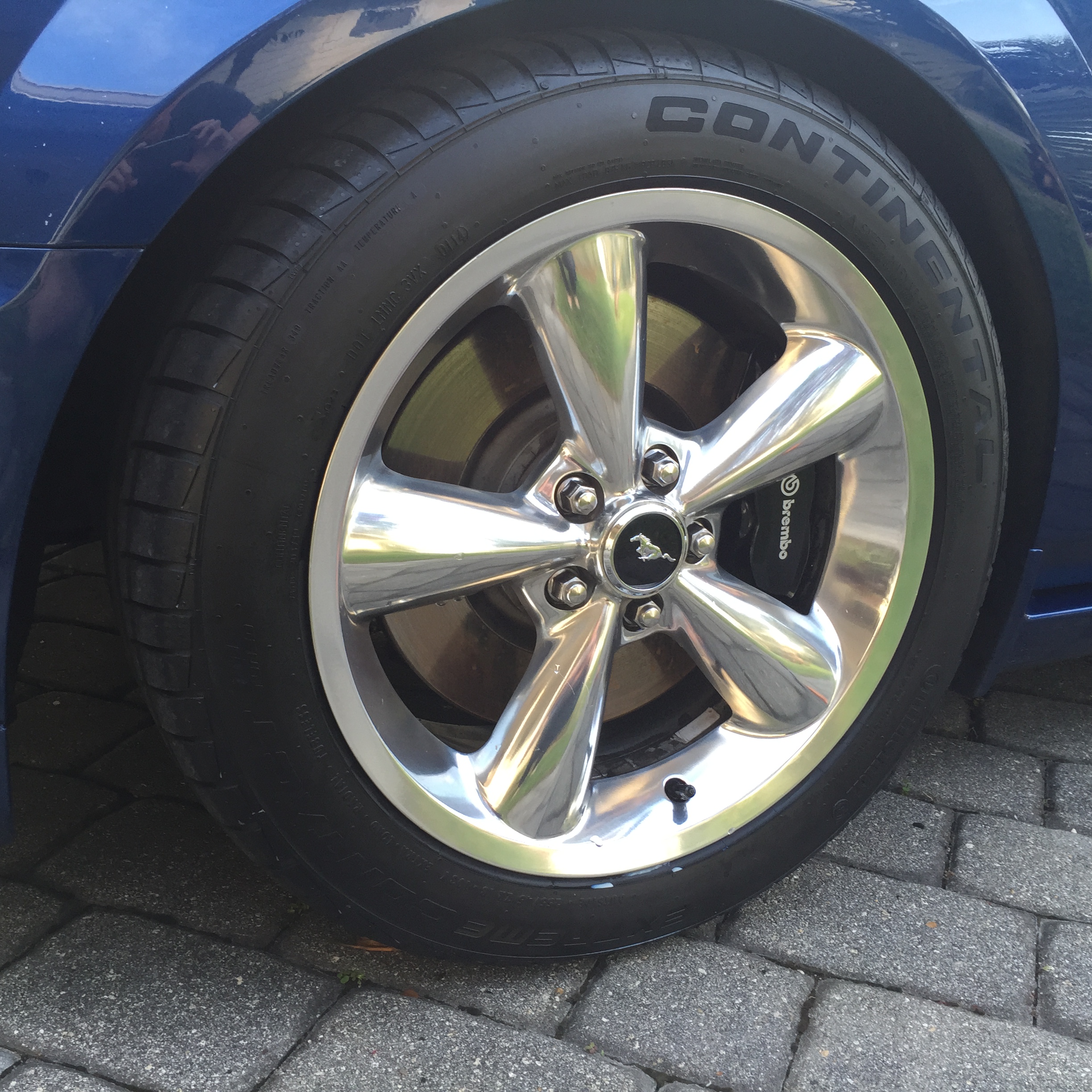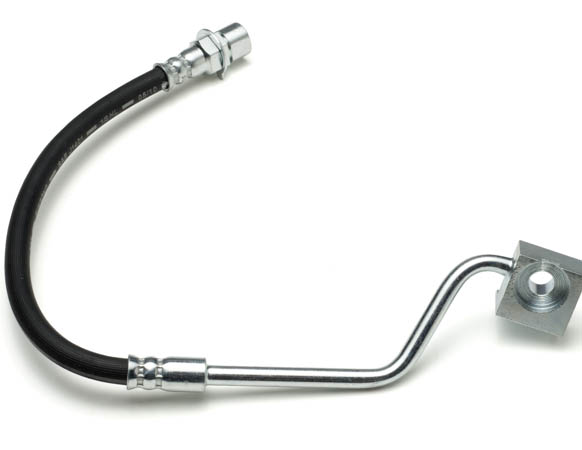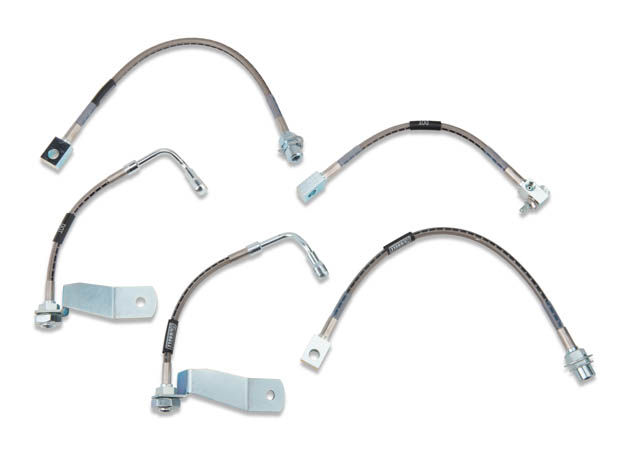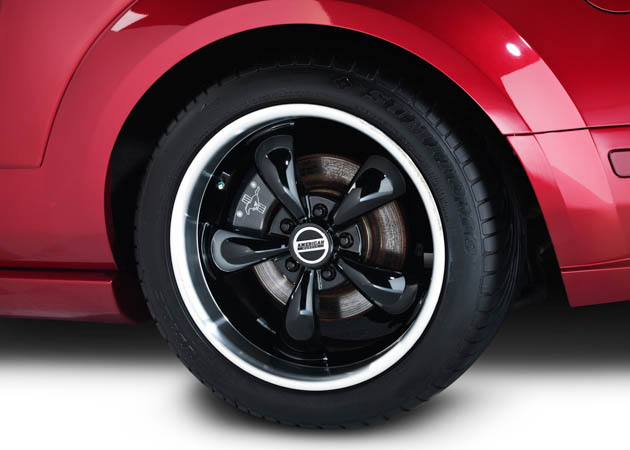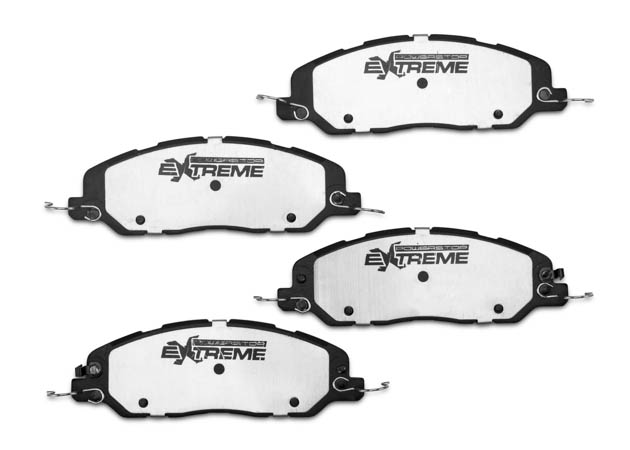Usually the first thing anyone thinks about in terms of brake upgrades is rotors and pads. Essentially big brake kits. However, there's another part that can add years of reliability to your brake system: the brake hoses.
Shop Mustang Brakes
Nothing's worse than a part failing on you. Preventive maintenance is key, and upgrading your brake hardware is one way to keep you safe.
Shop Brake Lines
Brake Systems: An Overview
- From pedal to pad the brake system goes pedal > master cylinder >brake fluid > brake calipers/wheel cylinders
- Flexible lines are used in conjunction with hard lines to be able to take turning the front wheels
- Factory hoses are rubber, which like other rubber products, are prone to dry rotting
- Stainless steel hoses are more durable, but are more expensive
- Stainless hoses also can handle more pressure, and don’t expand over time like the factory rubber lines
- Stainless hoses are not immune to pinprick leaks however, so checking them like you would the factory lines is always a good way to prevent bigger failures
In a hydraulic brake system, pressing the pedal will push a plunger into the master cylinder, forcing brake fluid through the rest of the system to the brake calipers or wheel cylinders. Running from the master cylinder are rigid steel lines that connect to flexible hoses. The flexible hose connects from the hardline to the brake caliper or wheel cylinder. These flexible lines allow for suspension travel and side to side movement during turning. Without these flexible lines, the hardline would become fatigued very quickly, eventually leading to failure.
What are Flexible Brake Lines Made of?
On most cars, factory brake lines on most cars are made from rubber which tends to flex under heavy use. Rubber makes for great brake lines because it is durable, resilient, and will last for a long time without having to be replaced. When designing a car, vehicle manufacturers look for low cost and low maintenance parts, and rubber fits the bill perfectly for brake lines. The other type of brake lines are stainless steel braided lines, Teflon, and Kevlar. Stainless steel lines have an inner tube wrapped in a stainless steel mesh. These lines are much stronger than rubber, but the increased strength comes with a larger price tag as well.
These types of aftermarket brake lines do not flex and expand under the extreme pressures when the brakes are applied heavily.
The benefits are:
- Better braking response
- Much firmer feel at the pedal
- Longer brake line life
NewArrivals
Why Choose Stainless Over Rubber?
Rubber lines are the perfect solution for non-performance oriented drivers. For people looking for a little more from their brake system, stainless lines are the better choice. Factory rubber lines are not reinforced like stainless lines, therefore when pressure builds in them, they will expand outward. That expansion results in a spongy or squishy pedal feel. By upgrading to a set of stainless steel lines over the factory rubber lines, you will reduce the outward expansion of the line. This in turn will reduce the spongy feel in your brake pedal and give you a more accurate pedal feel. An accurate pedal feel will allow for more sensitive braking adjustments and will also increase pedal feedback into the system.
Downsides to Stainless Lines
With the increase in strength associated with stainless steel lines, also comes a little more maintenance. The braided mesh covering can allow small dust and dirt particles to get between the braiding and hydraulic line. Over time, these dirt particles will wear away at the inner lining and will eventually cause a leak. Most stainless steel brake lines will come with a PVC (or other similar covering) on them to prevent dirt intrusion, but it is important to know the specifics of your lines. Even if you do have a PVC covering on your stainless braided lines, it is still a good idea to check them periodically for leaks.
Should I Get Stainless Lines?
If you do any sort of spirited or performance driving, stainless steel lines are a must have. The increased pedal feel makes braking more accurate and consistent, while giving the driver a newfound trust in the braking system. Upgrading to stainless steel lines with a set of more aggressive brake pads will make your Mustang stop quicker and more confidently than rubber factory lines. If you make sure to get a set of stainless lines with a coating on the stainless, they will last a very long time as well! Stainless steel brake lines make the perfect upgrade if you need to replace worn factory lines, or you are just looking for a firmer pedal feel.
Fitment includes: 1979, 1980, 1981, 1982, 1983, 1984, 1985, 1986, 1987, 1988, 1989, 1990, 1991, 1992, 1993, 1994, 1995, 1996, 1997, 1998, 1999, 2000, 2001, 2002, 2003, 2004, 2005, 2006, 2007, 2008, 2009, 2010, 2011, 2012, 2013, 2014, 2015, 2016, 2017, 2018, 2019, GT, V6, Cobra, ShelbyGT500, Bullitt, Mach1, Boss, LX, SVO, EcoBoost, ShelbyGT350
GeneralTopSellers


